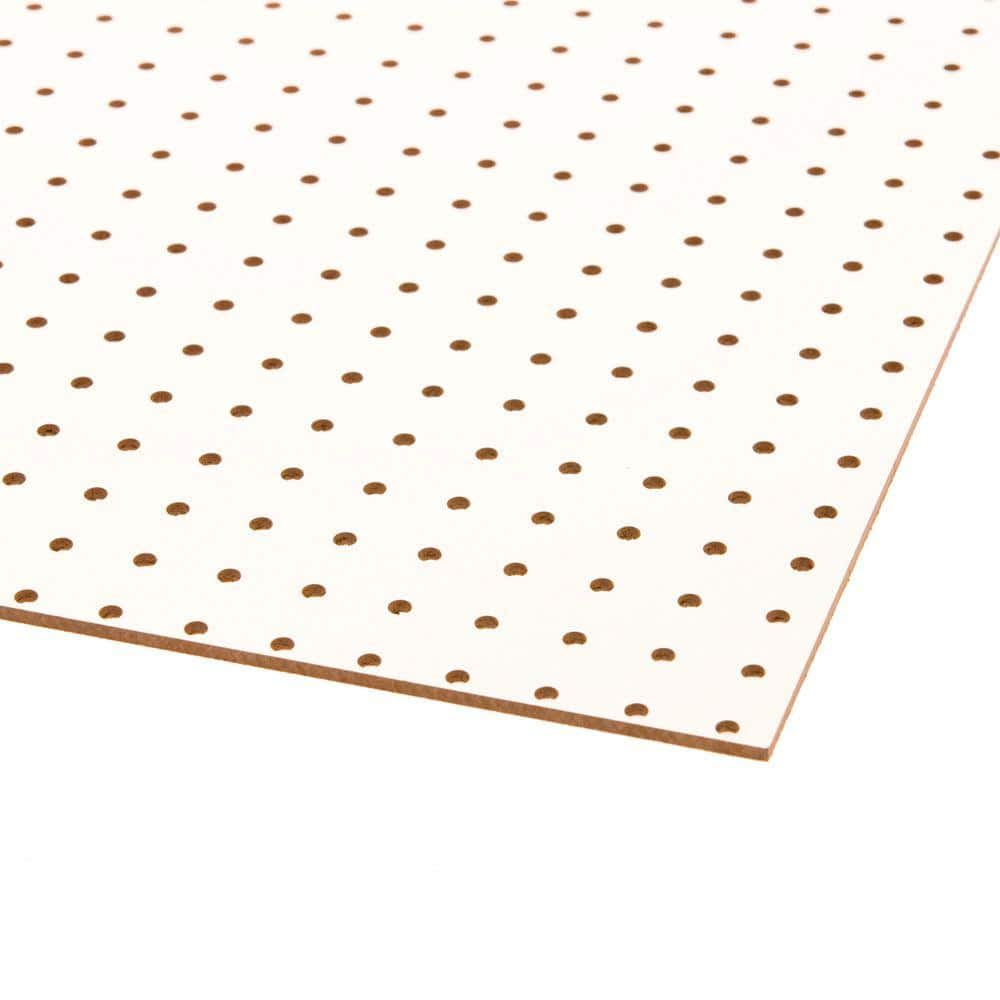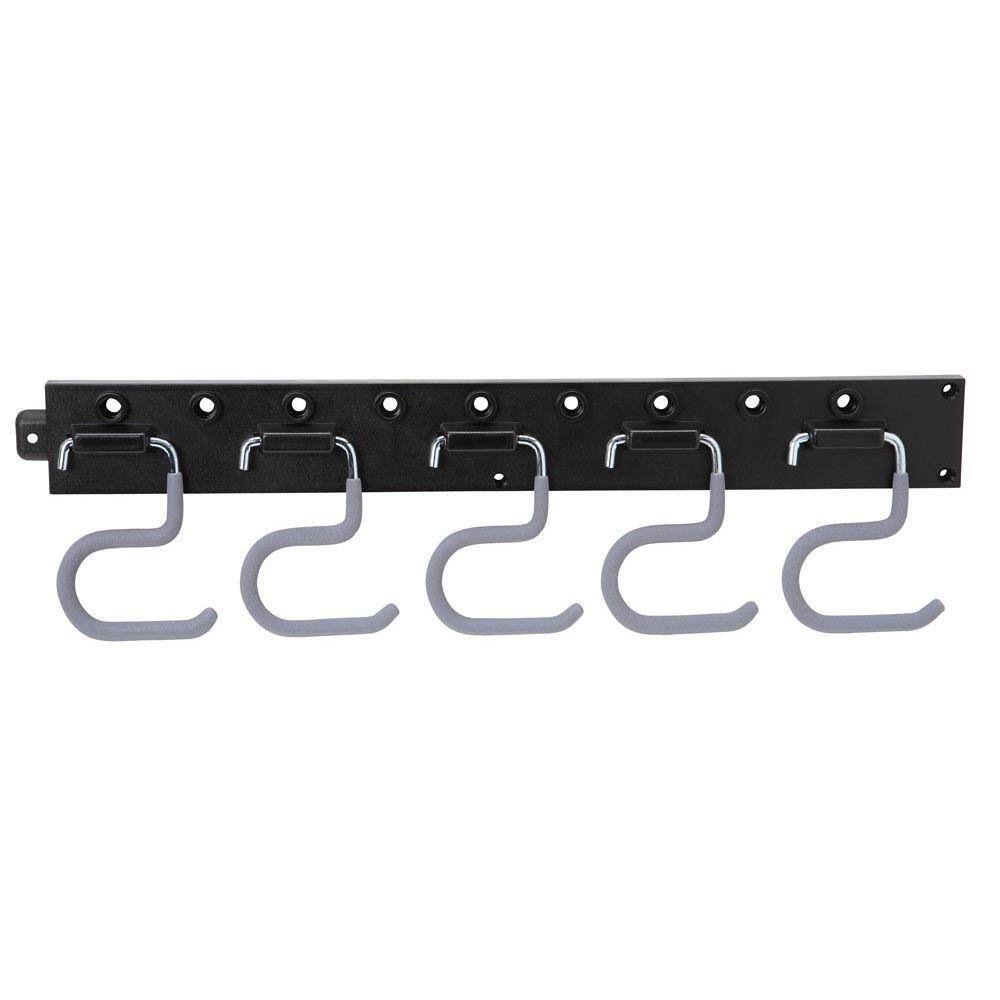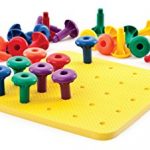Pegboards
 Did you know you can get a piece of peg board (2 ft X 4 ft) from a home improvement store for less than $10.00? I did a little research and discovered that peg boards come in all sorts of shapes and sizes, and are made from a variety of materials. They are all pretty affordable and have limitless uses in the early childhood environment. Many of the activities or uses I suggest for the classroom pegboards (as opposed to the little pegboards you have in your math centers) require children to use spatial literacy. Spatial literacy includes problem solving in situations involving the mental rotation of objects in space, perspective taking, the representation of space, spacial relationships, and conceptualize distance.
Did you know you can get a piece of peg board (2 ft X 4 ft) from a home improvement store for less than $10.00? I did a little research and discovered that peg boards come in all sorts of shapes and sizes, and are made from a variety of materials. They are all pretty affordable and have limitless uses in the early childhood environment. Many of the activities or uses I suggest for the classroom pegboards (as opposed to the little pegboards you have in your math centers) require children to use spatial literacy. Spatial literacy includes problem solving in situations involving the mental rotation of objects in space, perspective taking, the representation of space, spacial relationships, and conceptualize distance.
One of the obvious places you could put up a peg board is in your woodworking area.

Rather than having all of your tools all jumbled up in a box under the woodworking table, hang a simple piece of pegboard up over the table and carefully organize your tools so they all fit. Once you have them in place, lay the entire thing down on the ground and carefully draw an outline around each tool so the children can match the shape and size of the tool with the space where it belongs. This will keep your tools organized while also asking children to use their math skills to put their materials away.
One of my favorite ways to use peg boards is to hang them up at the children’s eye level and supply the children with a selection of hooks and clips so they can create their own wall project.




Next, put out a box of tubes, yarn, and pegs (the kind you have from your small pegboard collection are perfect).  Show the children how the pegboard hooks work. They may be a little complicated at first, but they will get the hang of it. Explain how the hooks can be moved around the board to provide anchors for their work. Provide a few examples of how the hooks can be used with the tubes and the yarn.
Show the children how the pegboard hooks work. They may be a little complicated at first, but they will get the hang of it. Explain how the hooks can be moved around the board to provide anchors for their work. Provide a few examples of how the hooks can be used with the tubes and the yarn.

This example comes from the hallway at Truman College. See how the tubes are set up to create a ball run for small balls, like ping pong balls. The balls move through the tubes and drop down to the next level. This requires an enormous amount of motor planning and spatial awareness and may take a while for children to create. Those who are very familiar with marble towers may have a greater understanding of the mechanics behind these kinds of designs. Make sure you also provide buckets or bins to catch the balls when they come to the bottom, otherwise you will have them rolling all over the classroom. Large marbles are another good option. They move a lot faster than ping pong balls so it might be interesting to encourage children to “race” the balls and experiment with speed.
Notice the addition of the upside down bottle. The wide bottom allows the balls to drop in and then they come out of the spout and back into the adjoined tube. They have also added colorful pipe cleaners; a tool that is extremely satisfying to the young child. They can be bent in any direction and are strong enough to hold stuff together. Awesome ideas.
Clothespins are another inexpensive and interesting addition you can provide. They work well when clipped onto the yarn, and if you have the multicolored variety, children can create patterns with them. They can use them to hang things off of their wall project, which sounds easy enough at first, but will require planning and estimating. Heavy things may slip so the children will have to figure out that they need to use more clips or hangs things that are lighter or smaller. There are so many uses for a board like this but leaving it as open-ended as possible creates a blank canvas on which children can work.
I’d love to hear from you about what you might add to a classroom pegboard?
this board made me think of the itsy bitsy spider- how fun would it be to add a real gutter spout with bendable ends to have a “spider” wash out?
That is a wonderful ideal
Getting pegboard at the hardware store is a wonderful idea!!
The pegboard is very helpful in the childcare facility.
It’s winter now and,I would used large white marble as snowballs and find a book to read
I would like to try using a small board to help teach kids measuring
I love these ideas for pegboards! We usually just have our kids stack the pegs and try to build towers or something with them. I’ll have to start using marbles with them for a more interesting and fun activity!
We use pegboards in our facility to count pegs and begin to recognize set number groups. I love these ideas for allowing kids to create marble runs and such. We might have to pick up some more pegboard!
This is such a neat idea for using pegboards with preschoolers. As a toddler teacher, we are used to using pegboards for counting and building activities. Your post makes me want to look at my classroom and see if there as a spot we could safely use pegboards for storage or three dimensional building like that.
It’s a little harder to think of good uses as many of my students are still very “mouthty” with materials and we have to be careful of choking hazards in the room. I like how part of your marble run photo shows making tape being used to hold up items.
For the “mouthy” children, you could create a pegboard that is immovable. The items are actually attached to the board, more like a busy board. It could still have all of the interactive qualities of the peg boards described in the post.
Love the idea of a pegboard
The giant pegboard is a great idea! I know that most centers already have the little pegboards with the colored pegs but by using the larger board it gives children a better understanding of their spatial awareness! It is such a fun and engaging activity!
As a three year old teacher I would like a pegboard for building, counting and making some shapes
I love the idea of using pegboards and open-ended materials to allow the children to explore the concept of creating patterns!
I never thought of some of these ideas
Very fun and useful ideas, We have a water wall that works similar to this
Like the idea and how it can grow as the children learn and grow.
We love using the orange foam pegboards in our classroom. It is one of the most played with toys. What are some other activities that we can do to incorporate these into the lesson?
Peg board is great we build and count and do color patterns with these.
On our shelf there is pictures of block shapes and when the child puts blocks away they make a pattern and can count how many square, round ect shapes.
There are many ways to bring in math pattern concepts . Like how there is so much math that we do every day and more ideas to add to it .
I like the suggestion of a peg board for the classroom and I also liked the various parts that created unique tunnels such as the upside down bottle. The idea of tracing the image of the tools onto the peg board was a sensational idea too!
I love pegs! I’ve seen my children creating different patterns and also using in pretend play.
I like this idea of using a pegboard to learn about space, problem solving, matching materials to those sketched out on the peg boards, etc. I think this allows children to be able to explore in more than one way and keep them engaged.
I think a net would be fun to attach to the bottom of the pegboard, to see what objects get caught in the net.